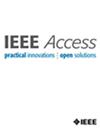基于元文化旅游和大模型微调的个性化导航交互框架
IF 3.4
3区 计算机科学
Q2 COMPUTER SCIENCE, INFORMATION SYSTEMS
引用次数: 0
摘要
随着大语言模型(large language models, llm)的广泛应用和虚拟世界旅游需求的快速增长,历史遗迹的数字化旅游和个性化互动已成为提升用户数字化旅游体验的关键。创造一个用户可以获取丰富文化信息并享受个性化沉浸式体验的环境是数字文化旅游领域的关键问题。为此,我们提出了一个基于LLM微调的旅游信息多模态生成个性化问答交互框架TIGMI (tourism information generation and multimodal Interaction),旨在为历史古迹虚拟游览提供更丰富、更深入的体验。以曲坛寺为例,该框架结合LLM、检索增强生成(retrieval augmented generation, RAG)和自动提示工程技术,从外部知识库中检索与历史遗迹相关的准确信息,并将其无缝集成到生成的内容中。这种集成机制确保了生成的答案的准确性和相关性。在曲坛寺三维数字场景中,通过TIGMI的llm驱动命令交互机制,用户可以与建筑和场景环境进行个性化、实时的交互,成功地将历史文化信息与现代数字技术相结合。这种整合显著增强了交互的自然度,个性化用户体验,从而提高了用户沉浸感和信息获取效率。评价结果表明,TIGMI在问答和多模式交互方面表现突出,显著提升了个性化虚拟漫游服务的深度和广度。最后,我们指出了TIGMI的局限性,并简要讨论了未来的研究将如何进一步提高生成内容的准确性和用户满意度,以适应动态变化的旅游环境。本文章由计算机程序翻译,如有差异,请以英文原文为准。
An Interactive Framework for Personalized Navigation Based on Metacosmic Cultural Tourism and Large Model Fine-Tuning
With the wide application of large language models (LLMs) and the rapid growth of metaverse tourism demand, the digital tour and personalized interaction of historical sites have become the key to improving users’ digital travel experience. Creating an environment where users can access rich cultural information and enjoy personalized, immersive experiences is a crucial issue in the field of digital cultural travel. To this end, we propose a tourism information multimodal generation personalized question-answering interactive framework TIGMI (Tourism Information Generation and Multimodal Interaction) based on LLM fine-tuning, which aims to provide a richer and more in-depth experience for virtual tours of historical monuments. Taking Qutan Temple as an example, the framework combines LLM, retrieval augmented generation (RAG), and auto-prompting engineering techniques to retrieve accurate information related to the historical monument from external knowledge bases and seamlessly integrates it into the generated content. This integration mechanism ensures the accuracy and relevance of the generated answers. Through TIGMI’s LLM-driven command interaction mechanism in the 3D digital scene of Qutan Temple, users are able to interact with the building and scene environment in a personalized and real-time manner, successfully integrating historical and cultural information with modern digital technology. This integration significantly enhances the naturalness of interaction and personalizes the user experience, thereby improving user immersion and information acquisition efficiency. Evaluation results show that TIGMI excels in question-answering and multimodal interactions, significantly enhancing the depth and breadth of services provided by the personalized virtual tour. We conclude by addressing the limitations of TIGMI and briefly discuss how future research will focus on further improving the accuracy and user satisfaction of the generated content to adapt to the dynamically changing tourism environment.
求助全文
通过发布文献求助,成功后即可免费获取论文全文。
去求助
来源期刊

IEEE Access
COMPUTER SCIENCE, INFORMATION SYSTEMSENGIN-ENGINEERING, ELECTRICAL & ELECTRONIC
CiteScore
9.80
自引率
7.70%
发文量
6673
审稿时长
6 weeks
期刊介绍:
IEEE Access® is a multidisciplinary, open access (OA), applications-oriented, all-electronic archival journal that continuously presents the results of original research or development across all of IEEE''s fields of interest.
IEEE Access will publish articles that are of high interest to readers, original, technically correct, and clearly presented. Supported by author publication charges (APC), its hallmarks are a rapid peer review and publication process with open access to all readers. Unlike IEEE''s traditional Transactions or Journals, reviews are "binary", in that reviewers will either Accept or Reject an article in the form it is submitted in order to achieve rapid turnaround. Especially encouraged are submissions on:
Multidisciplinary topics, or applications-oriented articles and negative results that do not fit within the scope of IEEE''s traditional journals.
Practical articles discussing new experiments or measurement techniques, interesting solutions to engineering.
Development of new or improved fabrication or manufacturing techniques.
Reviews or survey articles of new or evolving fields oriented to assist others in understanding the new area.
 求助内容:
求助内容: 应助结果提醒方式:
应助结果提醒方式:


